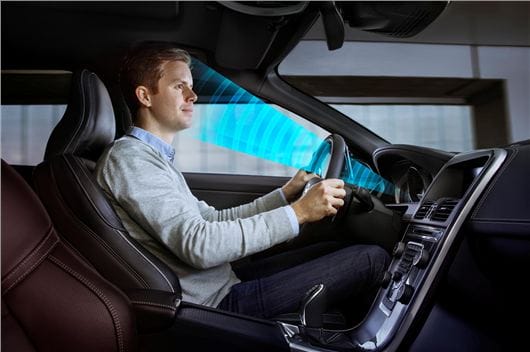Volvo is working on a technology that can detect whether the driver is paying complete attention or not. The Car will be able to recognise and distinguish whether a driver is tired or inattentive through a new technology that claims to be able to improve safety by monitoring drivers’ eye movements.
The car is presumed to be safer and could be dubbed the car of the future. It is possible to figure a driver’s state, and the technology will adjust the car accordingly. This means, the technology will ensure that the car doesn’t steer out of the lane or get too close to another car when the driver is not paying attention. It will also wake up the driver if he’s falling asleep. According to Per Landfors, engineer at Volvo Cars and project leader for driver support functions, “This will enable the driver to be able to rely a bit more on their car, and know that it will help them when needed,”
Volvo says by placing a sensor on the dashboard to monitor aspects such as in which direction the driver is looking, how open their eyes are, as well as their head position and angle, it is possible to develop precise safety systems that detect the driver’s state and are able to adjust the car accordingly.
Landfors also added that “Since the car is able to detect if a driver is not paying attention, safety systems can be adapted more effectively. For example, the car’s support systems can be activated later on if the driver is focused, and earlier if the driver’s attention is directed elsewhere,”
Some of the current systems that can be included are lane keeping assistance, collision warning with full autonomous braking and adaptive cruise control with queue assist.
Driver sensors are also opening up other possibilities. By monitoring eye movements, the car would be able to adjust both interior and exterior lighting to follow the direction in which the driver is looking, says Volvo. The car would also be able to adjust seat settings, for instance, simply by recognising the person sitting behind the wheel.
“This could be done by the sensor measuring between different points on the face to identify the driver, for example,” said Landfors. He also clarified that at the same time, however, it is essential to remember than the car doesn’t save any pictures and nor does it have a driver surveillance function.”
The technology is already installed in test vehicles. Volvo Cars is also conducting research along with partners, including Chalmers University of Technology and Volvo AB to identify effective methods for detecting tiredness and inattention






